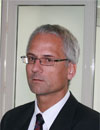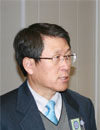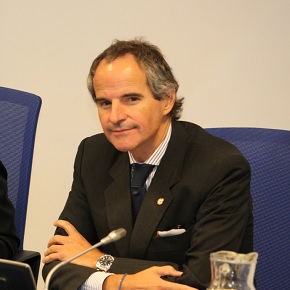Lead-Bismuth
CNNC is developing the miniaturized lead-bismuth fast reactors
China may get a share in SVBR-100
 Joachim Knebel: safety is always one of most important issues
Joachim Knebel: safety is always one of most important issues
I think it is very important conference in the field of the liquid metal technology. It gives very well overview on what is done worldwide in this field, especially in Russia, which is the leading nation in the liquid metal technology (lead and lead-bismuth).
In the conference we see the presentations on all research works in Russia, starting 50 years ago. Initially, it was the submarine application and now it is starting to be the civilian application. It is done in parallel to the light-water reactors and sodium reactors just in order to find the solutions for the energy problems.
This conference gives the very good overview of the work in Russia. Of course, I would like to stress we can see also the works done in international collaboration with Europe, Japan and USA.
I am coordinator of the biggest EURATOM project, which deals with the transmutation of the high-level waste. We are studying the heavy-liquid metal cooled subcritical accelerator-driven system.
 Professor Il Soon Hwang: heavy metal coolant has great advantages
Professor Il Soon Hwang: heavy metal coolant has great advantages
In order to accept this kind of situation in Korea, our university is pursuing the technical solutions to transmute the spent nuclear fuel. We expect that we can eliminate the long-living radioactive isotopes. Eventually we hope to turn all the spent nuclear fuel into low or medium level nuclear waste.
That means we can continue our nuclear power program with the public acceptance. One can say that the transmutation technology could help us to win this public acceptance. This technology is not only environmental friendly but also safe and proliferation resistant.
We see that the heavy metal coolant technology has the great advantages over any other existing technological option for the transmutation applications because of its chemical inertness, high boiling point and good capability for natural circulation.
Therefore, we are going to take the advantage of this Russian innovation in nuclear coolant to develop the safe and proliferation-resistant transmutation technology.
 Lead-bismuth CANDLE - Japanese challenge for SVBR
Lead-bismuth CANDLE - Japanese challenge for SVBR
Lead-bismuth fast neutron technologies in Russia are close to the demonstration. According to the declaration of the director of the energetic machine building department of the Russian machines company Vladimir Petrochenko, the first NPP with SVBR-100 reactor can be built in Obninsk in 2015.
But Russian SVBR has foreign rivals. One of them can become Japanese lead-bismuth reactor that is using the CANDLE burnup conception.
Reactors of high capacity, as it is well known, can be placed only in the regions with high energetic demands or/and developed nets. For the bigger part of countries such monsters as EPR-1600 or APWR-1700 can be elementary useless - countries of the third world won't be able to consume the produced amounts of electricity.
Besides, developing countries would prefer minimizing possible efforts on behalf of nuclear reactors. Ideally, facilities that don't demand or demand next to nothing servicing during the operation that would be brought to the site by the deliverers, assembled and after the campaign would be returned back to the country of manufacturer would suit them.
 Georgy Toshinsky: lead - bismuth is ready for demonstration
Georgy Toshinsky: lead - bismuth is ready for demonstration
First of all it is important to stress that lead-bismuth technology was initially created and applied at the Soviet naval reactors - it is the project 705 (or the Alfa seria).
At first we didn't have necessary knowledge and experience. Naturally we faced a series of difficulties and failures at that stage. They were overcome thanks to the persistent work of a lot of organizations, first of all IPPE and OKB Gidropress. At serial submarines reactors were working successfully, though, certainly, experience of work with the naval reactors was not so huge as that of the NPPs operation.
At the same time Rosatom scientific-technical counsel has recognized this technology as prepared for the demonstration and included into the federal program for its realization at the pilot unit with SVBR-100 reactor.
The main advantage of this technology is modularity, that allows creating of power generating units of different capacity divisible by 100 MWe (el.) on the base of a uniformed reactor module that is implemented on the machine-building plant and completely finished is delivered by railway or other transport to the NPP site.







